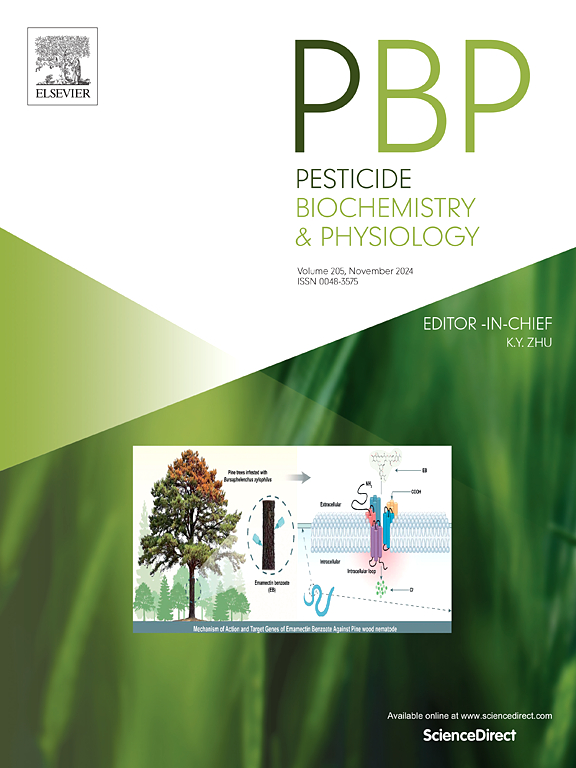Development of a novel anti-microsporidia strategy by inhibiting parasite and host glucose metabolism
IF 4.2
1区 农林科学
Q2 BIOCHEMISTRY & MOLECULAR BIOLOGY
引用次数: 0
Abstract
Microsporidia are obligate intracellular parasites that infect most types of animals. Exploring how microsporidia utilize energy substrates in infected host cells is important for human health and the development of the agricultural economy. In this study, transcriptomics was used to systematically analyze the enriched pathways involving ATP/ADP transporters and energy metabolism during the schizont proliferation period of Nosema bombycis. A Nosema bombycis ADP/ATP carrier 1 (NbAAC1) protein function characteristics of the adenine nucleotide translocase family were identified after infection with N. bombycis. NbAAC1 could inhibit ATP production and affect Nosema bombycis proliferation based on RNA interference in vivo and in vitro. Meanwhile, an effective gene-edited line targeted editing of the Bombyx mori hexokinase (BmHXK) gene of the host glycolytic metabolism pathway could inhibit N. bombycis infection was established. These findings provide new therapeutic approaches to controlling microsporidia infections by inhibiting intracellular parasitic fungi and host energy metabolism.

求助全文
约1分钟内获得全文
求助全文
来源期刊
CiteScore
7.00
自引率
8.50%
发文量
238
审稿时长
4.2 months
期刊介绍:
Pesticide Biochemistry and Physiology publishes original scientific articles pertaining to the mode of action of plant protection agents such as insecticides, fungicides, herbicides, and similar compounds, including nonlethal pest control agents, biosynthesis of pheromones, hormones, and plant resistance agents. Manuscripts may include a biochemical, physiological, or molecular study for an understanding of comparative toxicology or selective toxicity of both target and nontarget organisms. Particular interest will be given to studies on the molecular biology of pest control, toxicology, and pesticide resistance.
Research Areas Emphasized Include the Biochemistry and Physiology of:
• Comparative toxicity
• Mode of action
• Pathophysiology
• Plant growth regulators
• Resistance
• Other effects of pesticides on both parasites and hosts.

 求助内容:
求助内容: 应助结果提醒方式:
应助结果提醒方式:


